
First Cohort of Bilingual Authorization Graduates Return to the Classroom
Wednesday September 24, 2025
Kern County’s need for bilingual educators is growing — and thanks to a partnership between the Kern County Superintendent of Schools (KCSOS) and California State University, Bakersfield (CSUB), the pipeline is beginning to strengthen.
Through the state-funded Bilingual Teacher Professional Development Program (BTPDP), teachers across Kern County have the opportunity to complete coursework at CSUB at no cost and earn their Bilingual Authorization (BILA). This credential allows them to teach in dual language immersion (DLI) programs.
“Last year, we had 15 teachers in the program. This year we have 26, the program is growing,” said Dina Esparza-Diaz, KCSOS Content Coordinator for English language development. “Teachers have this opportunity so they can get their credentials, and they can support the students.”
The program includes three courses, combined with classroom observation hours, which will prepare teachers to lead instruction in both English and Spanish. The grant covers students’ tuition, as well as professional development courses hosted by KCSOS. Graduates not only fill critical roles in local districts but also bring a deep personal connection to bilingual education.
“I wanted to do the program because I started as an English learner. I only knew Spanish,” said Adriana Maldonado, a kindergarten DLI teacher at the new Mountain View TK-8 school in the Panama Buena Vista Union School District (PBVUSD). “I want to make my dad proud, he told me: ‘You’re bringing the Spanish back to our culture, and you’re sharing the beauty of the language.”
The program’s structure — a tight-knit cohort tackling three demanding courses while working full-time — fostered community as much as it did expertise. Maria Gonzalez, who finished the courses last year and received her bilingual certification, says everyone trusted and relied on each other.
“It was so nice to be able to count on each other, especially if there was an assignment that we weren’t too sure about,” Gonzalez said. “Somebody would just pull you out of it, give you their ideas, and you would work together.”
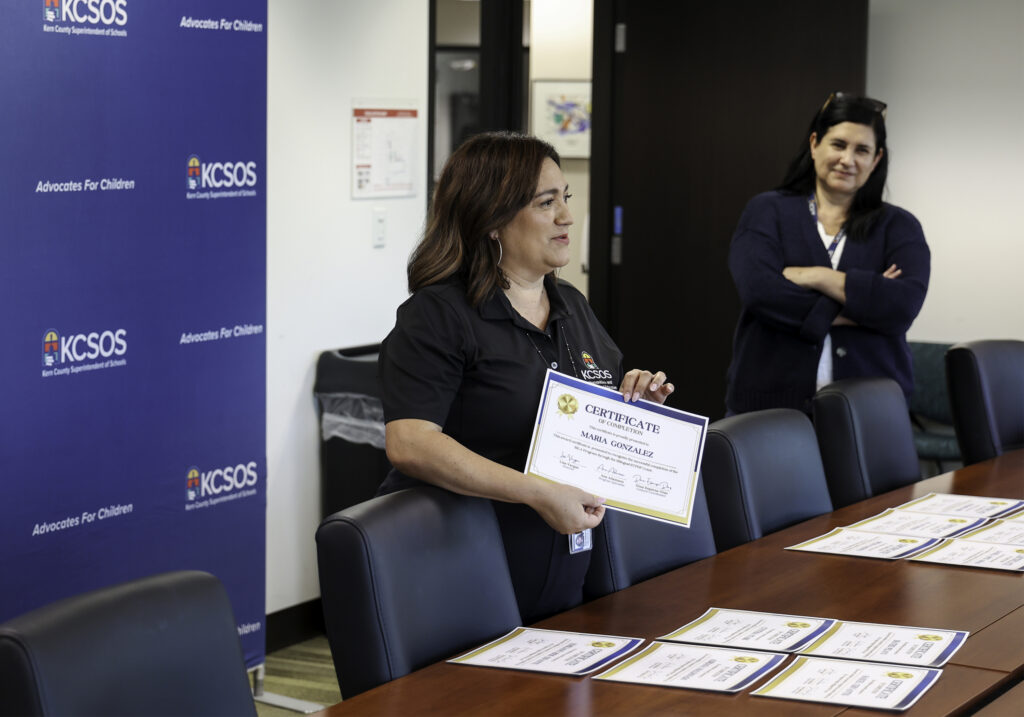
Graduates receive their BILA certification at KCSOS ceremony.
For the teachers who enrolled, the program wasn’t just about adding a credential. It was about reclaiming a piece of themselves. Raquel Cervantes, now teaching second grade at PBVUSD, described it as a homecoming.
“It reignites your passion for bilingual education,” Cervantes said. “My first teaching position was in ’97 in a bilingual program. When those classes went away and I got into EO (English Only), I was mourning being able to continue to pass on the Spanish language. When this opportunity came, I thought, wouldn’t it be amazing to be able to go back to where I started and where I know my passion is.”
For Dr. Adam Sawyer, CSUB’s bilingual authorization coordinator and instructor for the first course, this program is very close to his heart. He was teaching Spanish when Proposition 227, mandating English-only instruction in schools, went into effect. He described the decision as disheartening, as students from primarily Spanish-speaking households were forced to only learn in English. Since voters overturned the law in 2016, bilingual programs have slowly started to return to California.
“I worked with some of our school district leaders to get this program reestablished in 2019. It’s been very gratifying to be a part of that,” Dr. Sawyer said. “To see all this momentum, and how much it means to the teachers and students. It’s probably the thing I’m proudest of in my professional career.”
Now, the California Department of Education is moving in the other direction — embracing bilingual education with Global California 2030. This initiative aims to have half of all K–12 students in California participating in programs leading to proficiency in two or more languages by 2030. Dr. Sawyer says the research shows that DLI is the ‘Gold Standard’ of bilingual education.
“A really strong bilingual program is the single best way to acquire English, and maintain that home language identity,” Dr. Sawyer explained. “The benefits for students, academically, social-emotionally, I saw how important it was.”
While challenges remain — such as limited access to Spanish-language curriculum and modest stipends for teachers — the program is making progress. Districts across the county are expanding DLI programs, with new ones launched in Greenfield and Panama-Buena Vista in just the past two years.
“I think as a county, we have a lot to be proud of right now,” Dr. Sawyer said. “On the other hand, we have a long way to go still. Five to ten years from now, we’re looking at how we can grow.”
DLI programs offer much more than bilingual fluency. Students develop critical thinking skills, cultural competency, and long-term academic success.
“By the time they leave the program in sixth grade, students are fully bilingual,” Esparza-Diaz said. “It’s a beautiful program.”
For Maldonado, the reward is watching young learners embrace bilingualism with joy.
“Kids want to learn, they’re so excited to come to school,” she said. “It’s a superpower. And on the days when they struggle, I tell them, it’s going to be worth it, because your brain is growing two times bigger.”
KCSOS and CSUB plan to continue the program with new cohorts each year. The graduates of the first BILA cohort are filling an urgent need for the schools of Kern County, and they’re also changing the landscape of education.
“We are in year two of this five-year grant. I think in the future, the sky’s the limit,” Dr. Sawyer said.
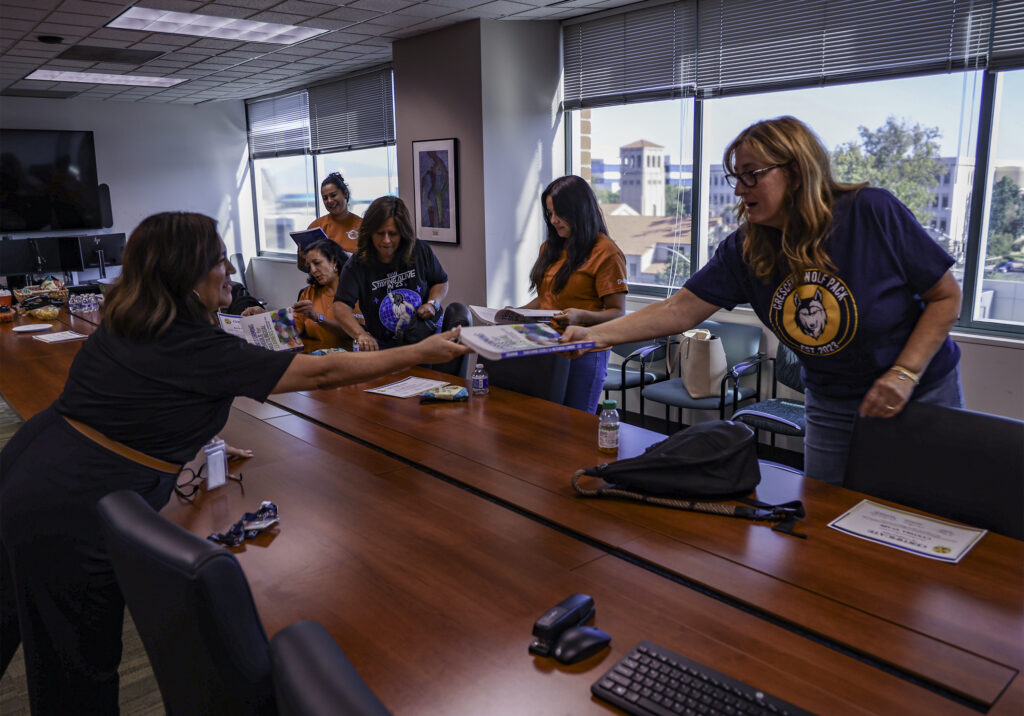
KCSOS gave graduates a guidebook for adapting curriculum for multilingual education.
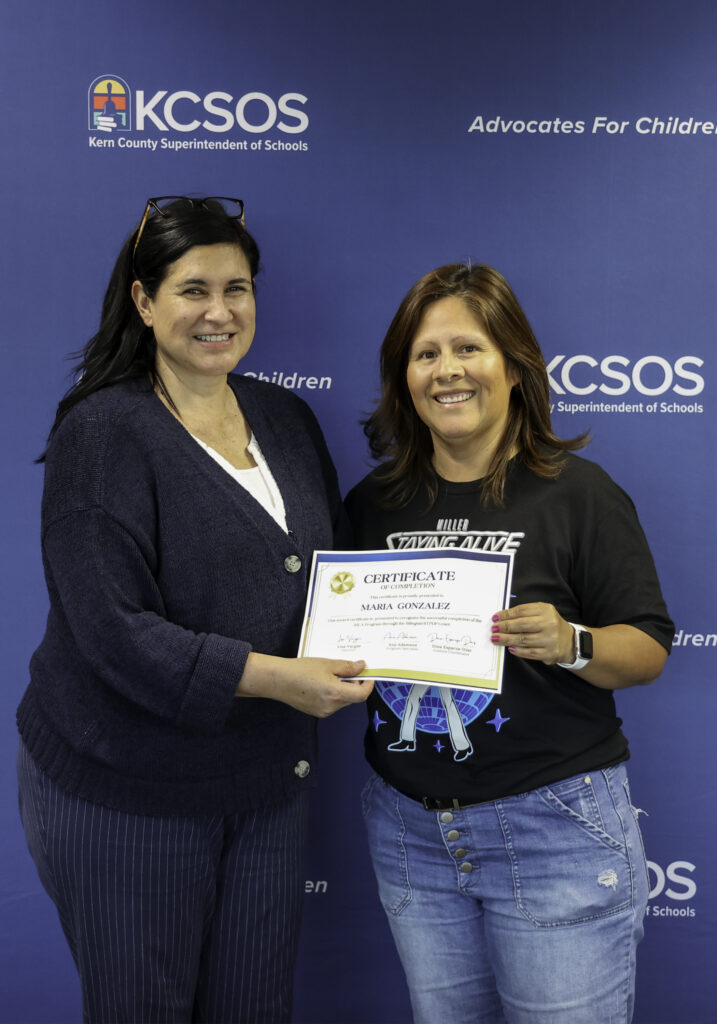
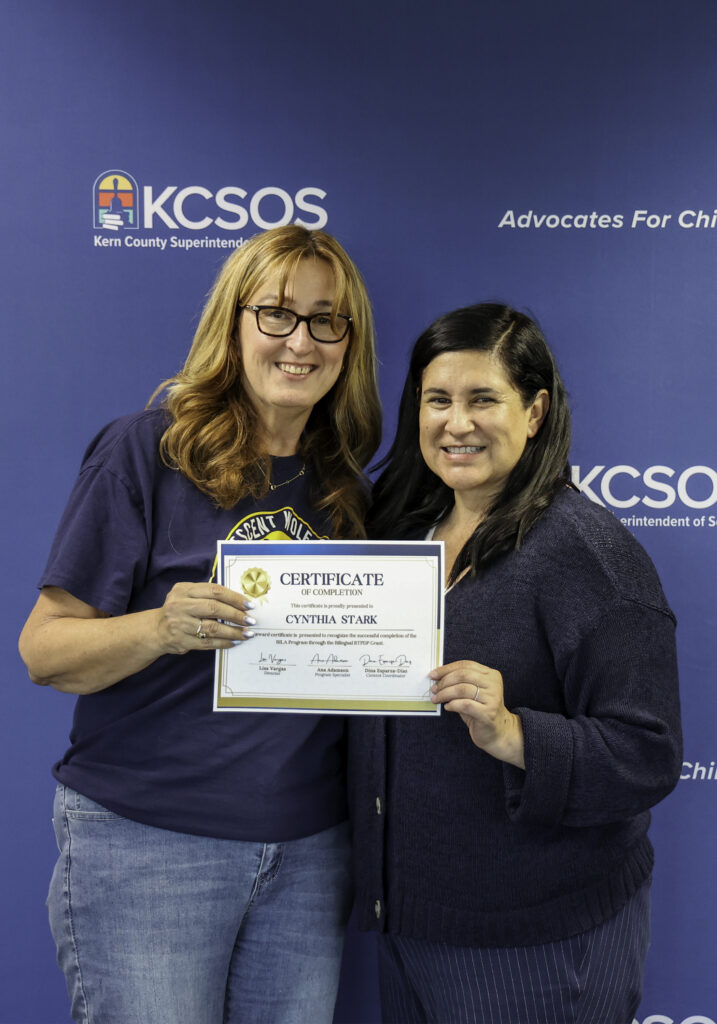
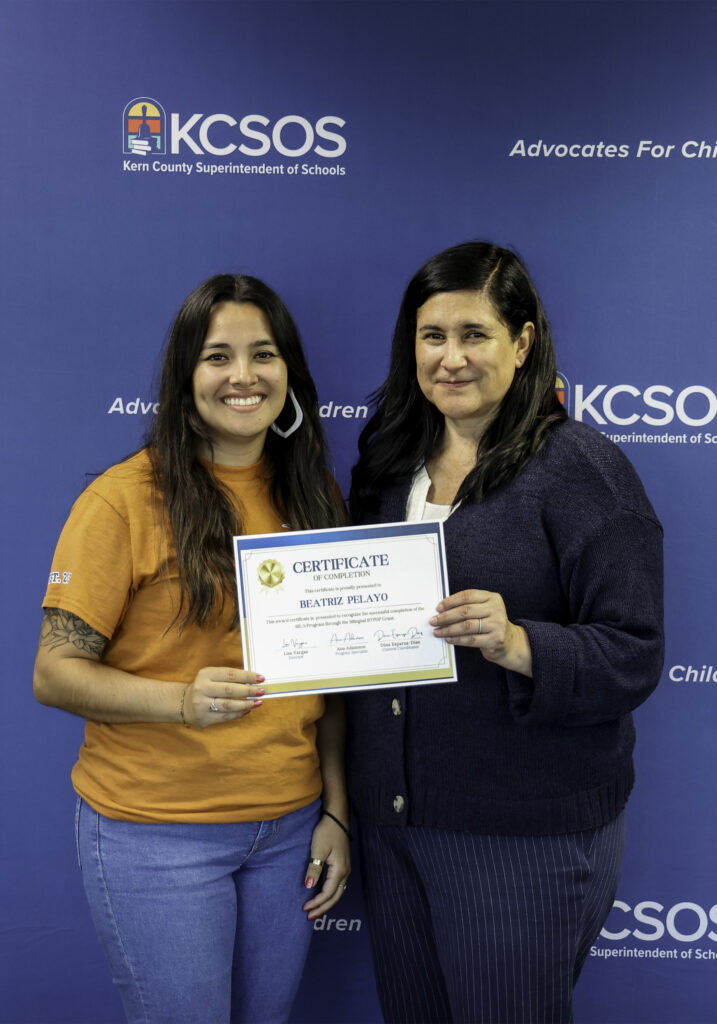
By Katie Avery
Katie Avery joined the Kern County Superintendent of Schools in 2023 as a Communications Specialist. As a former journalist and marketing professional, her passions include media and storytelling. Before joining KCSOS, Avery worked for various local TV stations as well as the health care industry.
